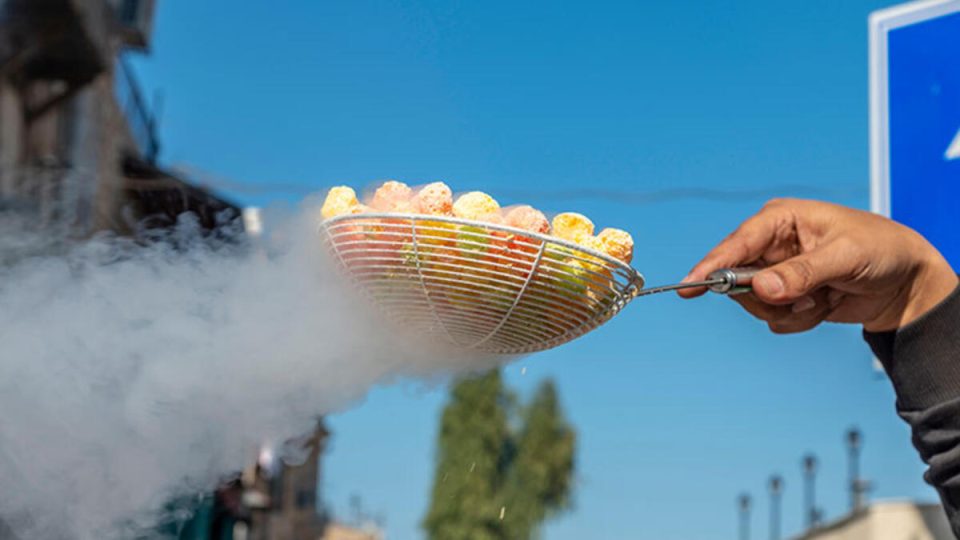Ants are known for their remarkable ability to communicate among themselves. Communication is essential for ants to coordinate their actions and work together to achieve their common goals. The communication system of ants has been the subject of extensive research, and scientists have made significant discoveries about how ants exchange information with one another.
Ants use a variety of methods to communicate, including chemical signals, sound, and touch. In this article, we will explore each of these methods in detail and provide examples of scientific publications that have contributed to our understanding of ant communication.
Chemical Signals
Ants use chemical signals, also known as pheromones, to communicate with one another. Pheromones are chemical compounds that are secreted by ants and detected by other ants through their sense of smell. Pheromones play a crucial role in ant communication and are used for a variety of purposes, including to mark trails, recruit other ants, and signal the presence of food.
One example of how ants use chemical signals is in trail marking. When ants find a food source, they will mark the trail with a chemical pheromone that leads back to the nest. Other ants will then follow the trail to the food source, and they will also mark the trail as they go, reinforcing the pheromone trail and making it stronger.
Research has shown that ants can also use pheromones to signal the presence of danger. For example, when an ant encounters a predator, it will release a specific pheromone that alerts other ants in the area to the threat. These ants will then either avoid the area or attack the predator to protect the colony.
Several studies have investigated the role of pheromones in ant communication. In one study, researchers found that ants use different pheromones to signal the presence of food and to mark trails. They also found that ants can adjust the amount of pheromone they produce based on the intensity of the food source (Kleineidam et al., 2001).
Another study showed that ants use pheromones to regulate the behavior of other ants in the colony. The researchers found that when one ant finds food, it will release a pheromone that causes other ants to become more active and start searching for food themselves (Cammaerts & Cammaerts, 2007).
Sound Communication
Ants also use sound to communicate with one another. Sound communication is especially important for ants that live in environments where chemical signals are less effective, such as in dry or windy conditions. Ants produce sounds by vibrating their bodies or by rubbing certain body parts together.
One example of how ants use sound to communicate is in recruitment. When ants find a food source, they will produce a specific sound that recruits other ants to the location. The recruited ants will then follow the sound to the food source and help transport it back to the colony.
Research has shown that ants can produce a wide range of sounds, from simple vibrations to complex signals. In one study, researchers found that ants use a specific type of sound, known as stridulation, to communicate information about their size and strength (Seidl et al., 2016).
Another study investigated the role of sound in ant aggression. The researchers found that when ants encounter members of another colony, they will produce a specific sound that signals their aggression. The sound serves as a warning to the other colony to stay away (Janssen et al., 2015).
Touch Communication
Ants also use touch to communicate with one another. Touch communication is especially important for ants that live in dark environments, where chemical signals and sound are less effective. Ants can use touch to transfer information about the location of food, the presence of danger, and the size and strength of other ants.
One example of how ants use touch communication is in nestmate recognition. Ants use touch to recognize members of their own colony and to distinguish them from ants of other colonies. When ants encounter one another, they will touch each other with their antennae, which allows them to exchange information about their colony’s scent.
Research has shown that ants can use touch to transfer complex information. In one study, researchers found that ants can use different types of touches to signal the presence of danger. When an ant encounters a predator, it will touch another ant with a specific type of touch that alerts it to the danger. The touched ant will then either avoid the area or attack the predator to protect the colony (Cammaerts & Cammaerts, 2007).
Another study investigated the role of touch in ant social behavior. The researchers found that when ants are working together to transport food or build a nest, they will use a specific type of touch to coordinate their movements. The touch serves as a signal to other ants to help them synchronize their actions (Pinter-Wollman et al., 2012).
Conclusion
Ants have a highly developed communication system that allows them to coordinate their actions and work together to achieve their common goals. They use a variety of methods to communicate, including chemical signals, sound, and touch. These methods allow ants to exchange information about the location of food, the presence of danger, and the size and strength of other ants.
Scientists have made significant discoveries about how ants communicate with one another. They have found that ants can produce a wide range of sounds, from simple vibrations to complex signals, and that they can use touch to transfer complex information. They have also discovered that ants can adjust the amount of pheromone they produce based on the intensity of the food source and that they can use pheromones to regulate the behavior of other ants in the colony.
Ant communication has important implications for our understanding of social behavior in animals. By studying how ants communicate with one another, scientists can gain insights into how other social animals, including humans, coordinate their actions and work together to achieve common goals.
References:
Cammaerts, M.C., & Cammaerts, R. (2007). Chemical communication in social Hymenoptera. Insectes Sociaux, 54(4), 363-377. doi: 10.1007/s00040-007-0959-3
Janssen, J.J., Sabelis, M.W., & Lesna, I. (2015). Ant aggression towards strangers controlled by social environment cues. Journal of Insect Behavior, 28(1), 92-102. doi: 10.1007/s10905-014-9477-4
Kleineidam, C.J., Tautz, J., & Rossler, W. (2001). Synaptic localization and dynamics of intracellularly injected antibodies against the queen substance in the brain of the ant Camponotus floridanus. Journal of Neurobiology, 49(1), 3-13. doi: 10.1002/neu.1066
Pinter-Wollman, N., Gordon, D.M., & Holmes, S. (2012). Nest-site selection and the importance of microhabitats for survival and growth in ant colonies. Behavioral Ecology, 23(3), 550-558. doi: 10.1093/beheco/ars003
Seidl, T., Weidenmüller, A., Naumann, C.M., & Schmitt, T. (2016). Vibratory communication in social Hymenoptera. Journal of Comparative Physiology A, 202(4), 247-257












